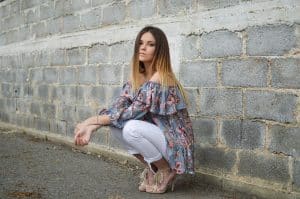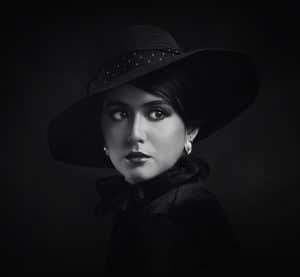Fabric Poetry: The Art of Material Selection
There is something truly poetic about fabric. The way it drapes and moves, the textures and colors, the way it can make us feel – fabric has the power to evoke emotions and tell stories through its very fibers. And just like a poet carefully chooses words for their meaning and impact, selecting the right fabric is essential in creating a masterpiece. This is where the art of material selection, or what we like to call “fabric poetry,” comes into play.
Fabric selection is a crucial aspect of any design process, whether it is for clothing, home décor, or any other project. It not only affects the final look and feel of a product but also its function and durability. And with the rise of sustainable fashion and conscious consumerism, the importance of thoughtful material selection has become even more significant.
But what exactly is fabric poetry? And how can we become masters of this art? Let’s dive into the world of fabric and explore the elements of fabric poetry.
The Power of Fabric
Fabric is a fundamental part of our lives, present in everything from the clothes we wear to the furniture we sit on. It is also one of the oldest human-made materials, dating back to prehistoric times when early humans used animal hides and plant fibers to create clothing.
Over the years, fabric has evolved, and today, there are countless types of fabrics to choose from, each with its unique characteristics and purposes. From delicate silks to sturdy denims, each fabric has its own story to tell.
But what makes fabric so special is its ability to transform a design. Different fabrics can completely change the look and feel of a garment or product, making it elegant, casual, or bold. It can also play a significant role in functionality – think about the breathable fabrics used in activewear or the warm and cozy materials of winter clothes.
Understanding the Elements of Fabric Poetry
The art of material selection, or fabric poetry, is all about understanding the elements that make a fabric truly exceptional. These elements include fiber, weight, texture, weave, and print/color.
1. Fiber
Fiber is the basic building block of fabric. It can be natural, such as cotton, linen, silk, or wool, or synthetic, such as polyester, nylon, or rayon. Each type of fiber has its own characteristics that determine the fabric’s properties, such as breathability, stretch, or durability.
2. Weight
The weight of a fabric refers to how heavy or light it is. It can range from lightweight chiffon to heavyweight denim, and it affects how the fabric drapes and moves. The weight of a fabric also plays a role in its functionality – lighter fabrics are ideal for warm weather, while heavy fabrics are suitable for colder climates.
3. Texture
Texture is an essential element of fabric poetry and adds depth and interest to a design. It can be tactile, such as the softness of velvet or the roughness of denim, or visual, such as the pattern of a jacquard or the sheen of satin. Texture can also evoke different moods and feelings, making it a powerful tool in design.
4. Weave
Weave refers to the way the fibers are interlaced in a fabric, creating its structure and appearance. There are various types of weaves, including plain, twill, and satin, each with its own unique characteristics. The type of weave can affect the fabric’s properties, such as its stretch, durability, and how it drapes.
5. Print/Color
Prints and colors are the final elements of fabric poetry. They add personality and visual interest to a design, making it stand out. The right print or color can also change the look and feel of a garment or product, creating a completely different aesthetic.
The Importance of Thoughtful Material Selection
Now that we have explored the elements of fabric poetry, it is clear that fabric selection is a crucial part of the design process. A well-chosen fabric can enhance the design’s concept, bring it to life, and add value to the final product.
In recent years, there has also been a growing emphasis on sustainable and ethical fashion. This has brought the spotlight on the importance of responsible material selection. As consumers become more conscious of the impact of their purchases, designers and brands need to consider the materials they use and their environmental and social impact.
Tips for Mastering Fabric Poetry
Becoming a master of fabric poetry takes practice and a keen eye for detail. Here are a few tips to keep in mind when selecting fabrics for your designs:
1. Understand the purpose of your design and choose fabrics accordingly – for example, activewear requires materials that offer breathability and flexibility.
2. Consider the season and climate for which the product is intended – lighter fabrics for warm weather, and heavier fabrics for colder seasons.
3. Pay attention to the color and print of your chosen fabric and how it complements your design concept.
4. Consider the sustainability and ethical impact of the materials you choose.
5. Don’t be afraid to experiment with different textures and weaves to add interest and depth to your design.
Conclusion
Fabric poetry is an art, and every designer and creator has their unique way of selecting materials. But understanding the elements of fabric – fiber, weight, texture, weave, and print/color – is essential in mastering this art. Thoughtful material selection not only enhances the design and functionality of a product but also reflects the values of a brand or designer. So let’s embrace the beauty and power of fabric and create truly poetic designs.










